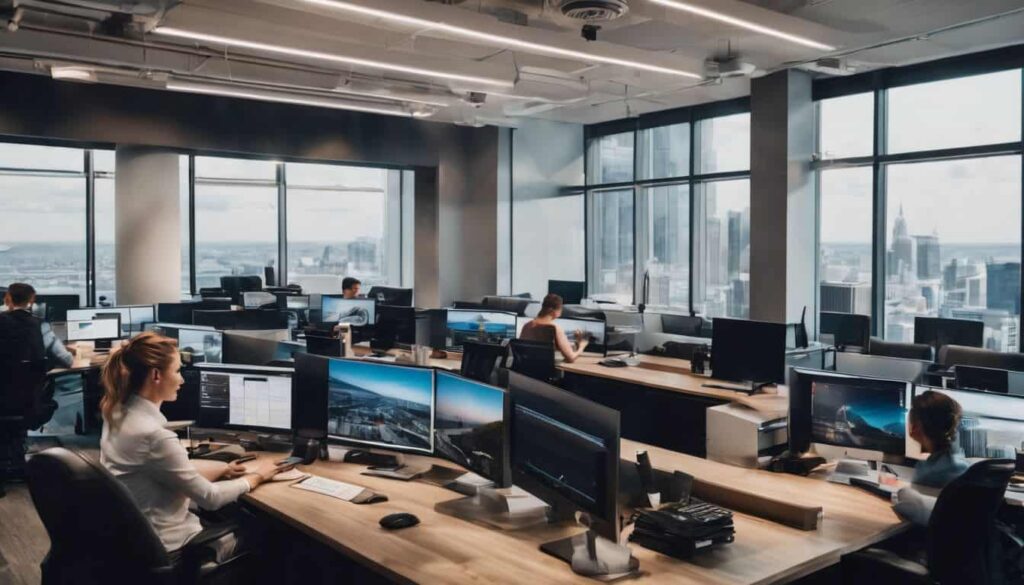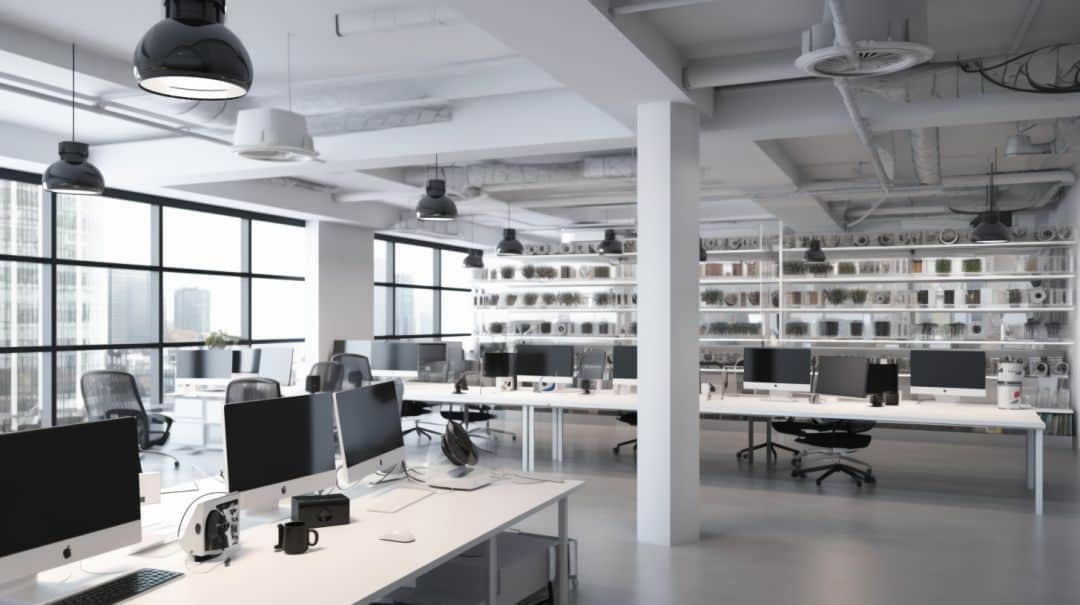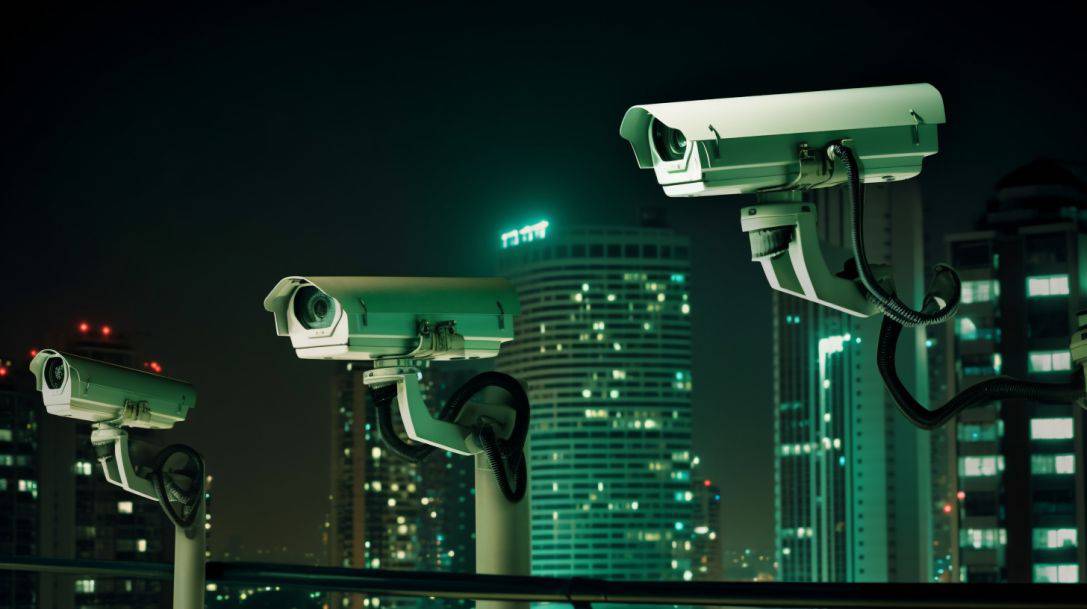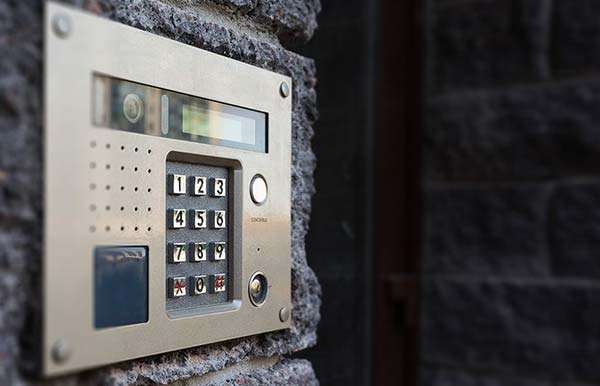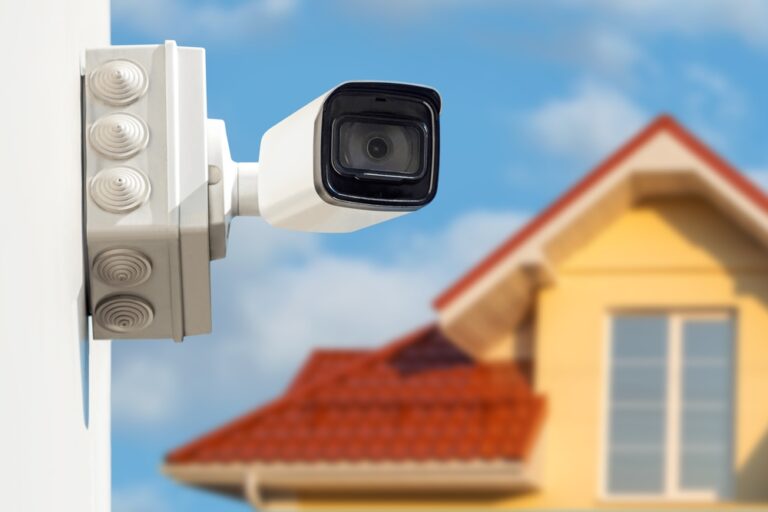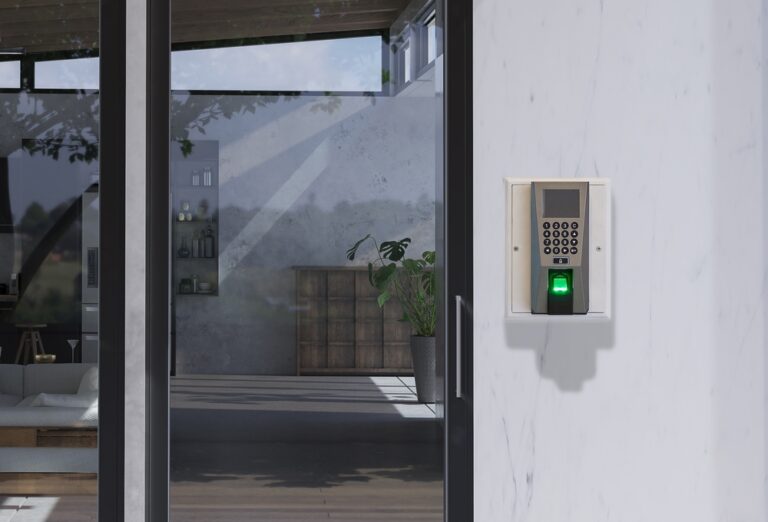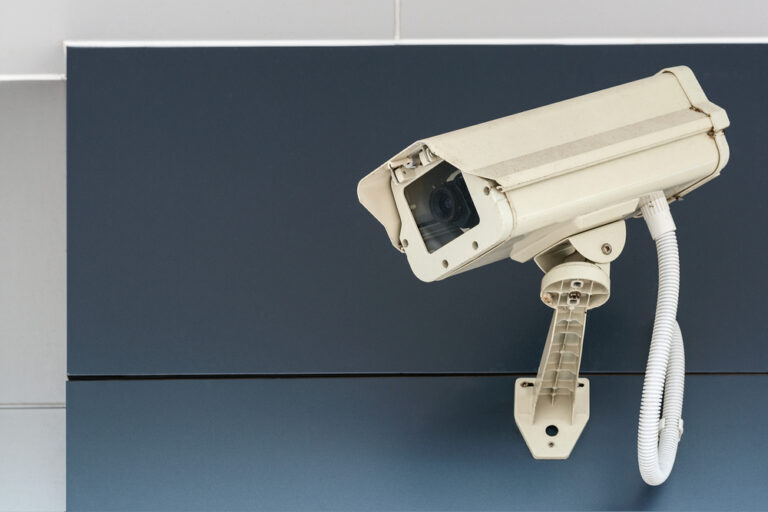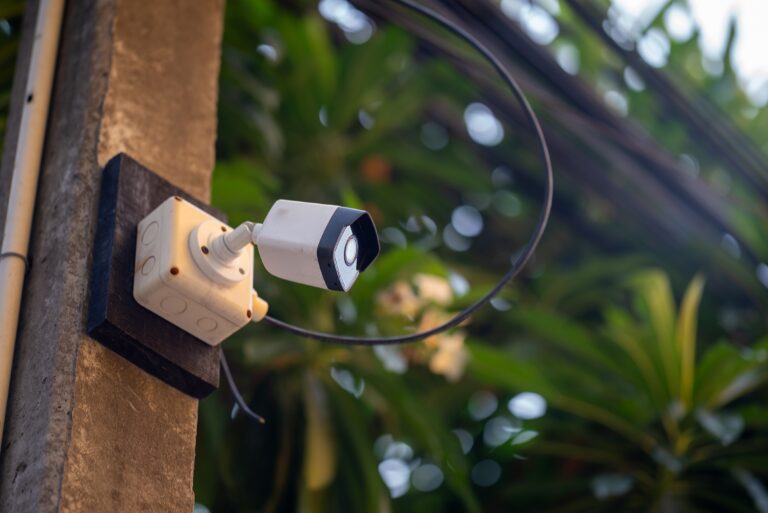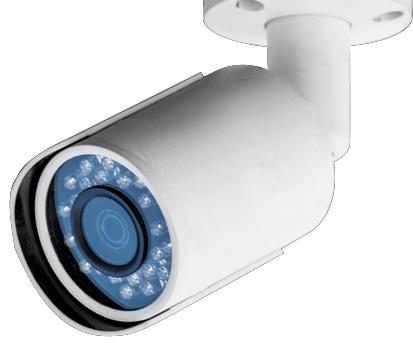- 1) Key Takeaways
- 2) Enhancing Security and Safety
- 3) Increasing Efficiency and Productivity
- 4) Preventing Loss and Theft
- 5) Enhancing Decision-Making and Planning
- 6) Remote Monitoring and Management
- 7) Legal Compliance and Privacy Considerations
- 8) Cost Benefits of Video Surveillance
- 9) Best Practices for Implementing Video Surveillance
- 10) Conclusion
-
11)
FAQs
- 11.1) Why does my business need video surveillance?
- 11.2) How do security cameras work in a retail business?
- 11.3) Can video surveillance be used for more than just protection?
- 11.4) Are there any concerns about privacy with the use of video surveillance in businesses?
- 11.5) What factors should I consider when setting up a camera placement strategy?
- 11.6) Is there mobile app access available for managing the Video Surveillance System?
Are you worried about protecting your business assets and improving efficiency? Studies show that businesses with video surveillance systems have seen a significant reduction in theft and an uptick in productivity.
This blog post will navigate through the benefits of video surveillance, providing you with vital strategies to enhance security while boosting operational efficiency. Get ready to transform your business operations — keep reading!
Key Takeaways
- Video surveillance boosts security, making businesses safer from theft and crime.
- Surveillance systems can improve business operations by monitoring employee activities and catching workflow issues.
- Video cameras help with accident prevention, making workspaces safer for everyone involved.
- Businesses can use video footage to better understand customer behavior and enhance service quality.
- With surveillance systems, companies can detect internal theft and protect valuable assets effectively.
Enhancing Security and Safety
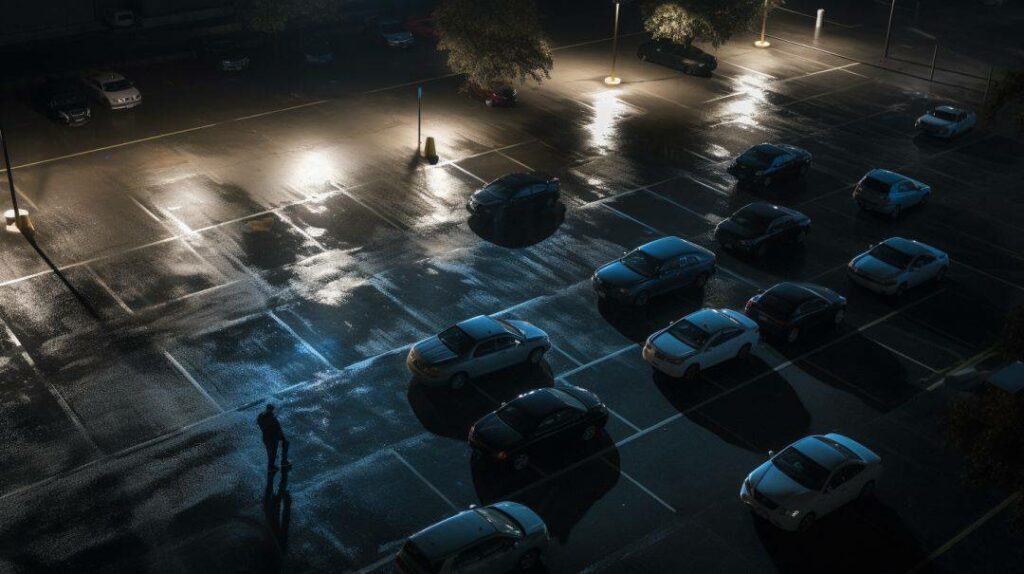
Video surveillance plays a pivotal role in enhancing the security and safety of businesses. It acts as an effective deterrent to criminal activities, warding off potential vandals or thieves.
Surveillance cameras can likewise aid in investigations by providing invaluable evidence for crime resolution. Monitoring employee behavior becomes simpler with video footage, ensuring adherence to company policies and ethics.
Furthermore, these systems are essential in accident prevention, enabling rapid response when mishaps occur on-site. Through enhanced security and safety measures facilitated by video surveillance, a business can maintain its operations seamlessly while fostering a safe working environment for everyone involved.
Deterrence of criminal activity
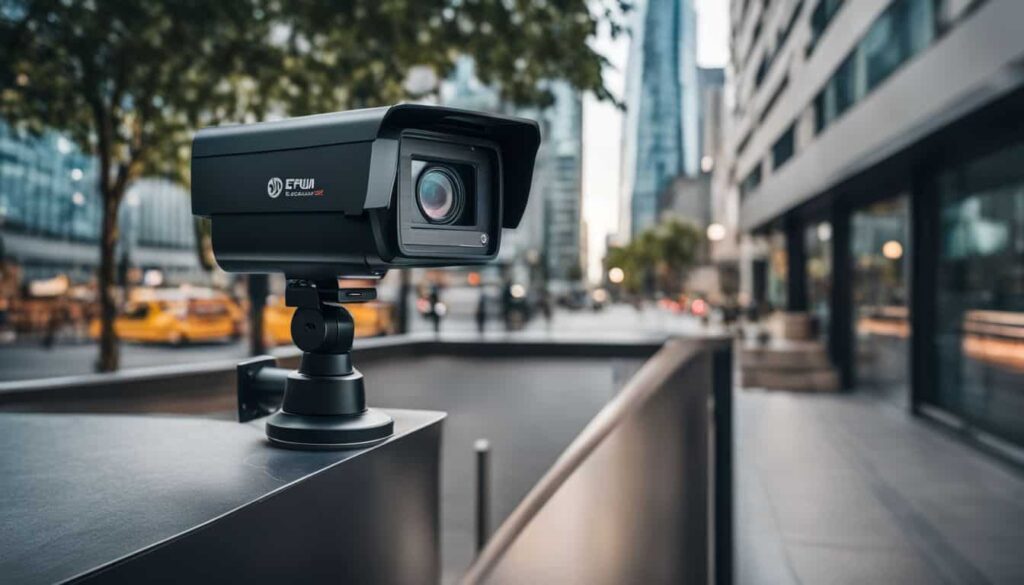
Video surveillance systems form a critical line of defense against unlawful behavior in businesses. The conspicuous placement of security cameras often discourages would-be criminals from carrying out their illicit activities, mitigating threats before they occur.
Even the simplest presence of these devices can help deter theft, vandalism, and various forms of misconduct. Furthermore, the potential video evidence that could be used in court makes it far less attractive for criminals to target businesses equipped with this technology.
Notably, cybercriminals are also deterred by advanced digital surveillance systems due to robust cybersecurity measures that protect against hacking incidents and unauthorized data access.
This proactive approach not only maintains safety but also saves valuable resources otherwise spent on damage control post-crime occurrence.
Crime investigation and evidence collection

Video surveillance not only deters criminal activity but proves invaluable in the aftermath of a crime. It can provide law enforcement with critical leads, speeding up their investigation process dramatically.
High-resolution cameras capture detailed footage, enabling clear identification of perpetrators and providing substantial legal evidence during trials. The profound impact that digital video surveillance systems have on investigations signifies their necessity in modern business operations.
Archive features also allow for easy accessibility and retrieval of older footage when required, further facilitating investigative operations. Equipped with advanced capabilities like facial recognition and motion detection, they offer accurate data to solve crimes swiftly and effectively.
This level of vigilant security reduces incidents such as theft, vandalism, and fraud substantially across all business sectors.
Monitoring employee behavior
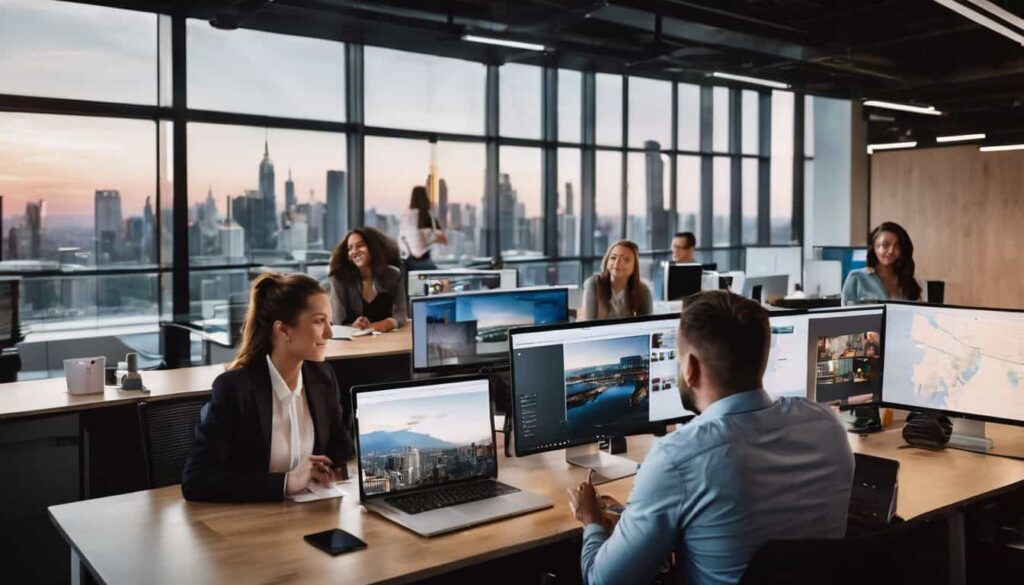
Video surveillance enables businesses to keep a close watch on employee behavior. It reveals any instances of misconduct, such as workplace conflict or policy violations. Surveillance systems not only promote discipline and professionalism among staff members but also protect employees from false accusations by providing objective evidence.
Digital video footage can serve as an essential tool for resolving disputes, enhancing overall productivity, and ensuring a harmonious work environment. At the same time, it helps to prevent potential thefts and unauthorized access within the premises, further securing business assets.
In some cases, real-time monitoring may even identify individuals who display consistent patterns of exemplary behavior deserving recognition or reward.
Monitoring and preventing accidents
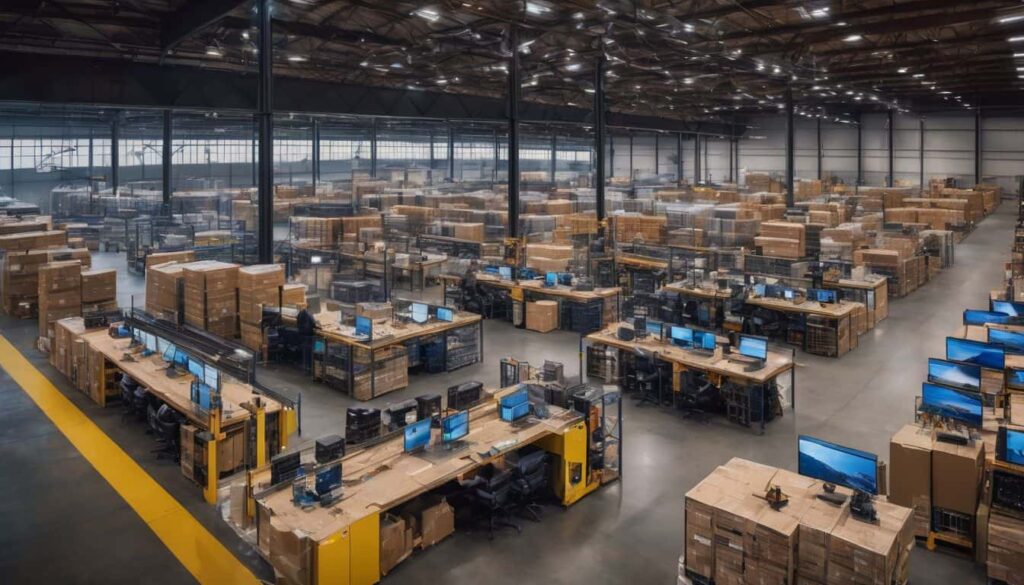
Advanced video surveillance systems play a crucial role in accident prevention. They help in identifying high-risk areas and implementing preventive measures. Surveillance cameras can track any unusual activities like equipment malfunctioning or unsafe practices followed by employees, triggering immediate action to prevent accidents.
Ongoing visual monitoring ensures that all safety protocols are strictly adhered to, promoting a safer work environment. With the use of thermal cameras or infrared technology, these systems can even detect overheating machinery or fire risks before they cause catastrophic damages.
Employers can intervene promptly and keep their staff safe from workplace hazards and potential accidents using real-time video feeds accessible remotely on mobile apps.
Increasing Efficiency and Productivity

Video surveillance systems can provide unparalleled insight into your business operations, helping you monitor workflows, identify areas for improvement, and elevate customer service.
Stay tuned to discover how this vital tool can address potential hazards in real time and boost your overall productivity.
Monitoring workflow and processes
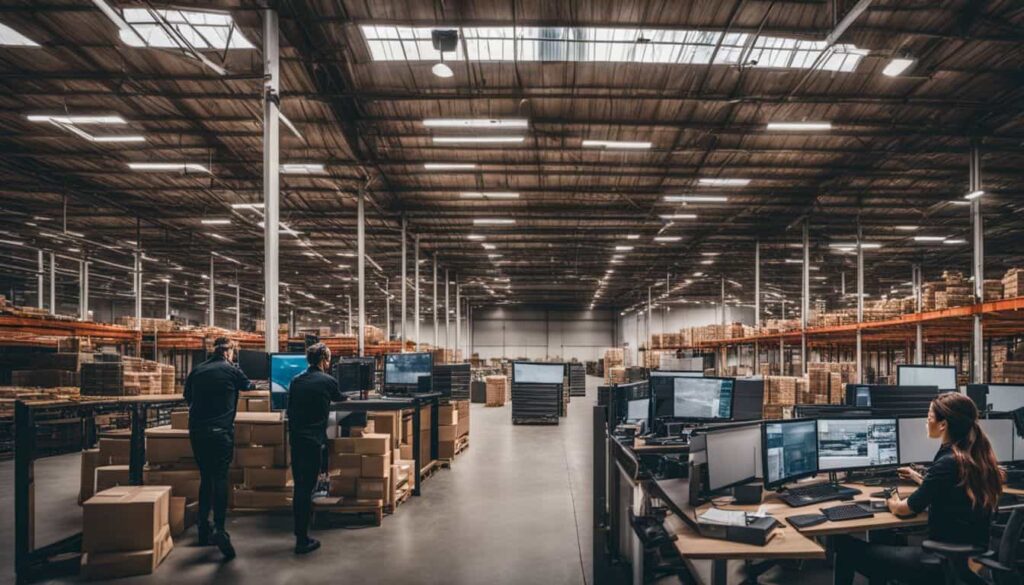
Video surveillance boosts operational efficiency by keeping a constant eye on workflow and processes. Real-time video feeds enable managers to observe employee productivity, assess daily operations, and make necessary adjustments instantly.
They provide businesses with the ability to view all areas of the operation at any given time from one centralized location allowing for more effective management.
With the installation of security cameras, employees might be encouraged to work harder knowing their activities are being monitored. It also aids in identifying bottlenecks or inefficiencies that can be fixed in order to streamline processes.
Also, through video analytics, patterns can emerge that show peak business hours or days when staff may need additional support.
Identifying areas for improvement
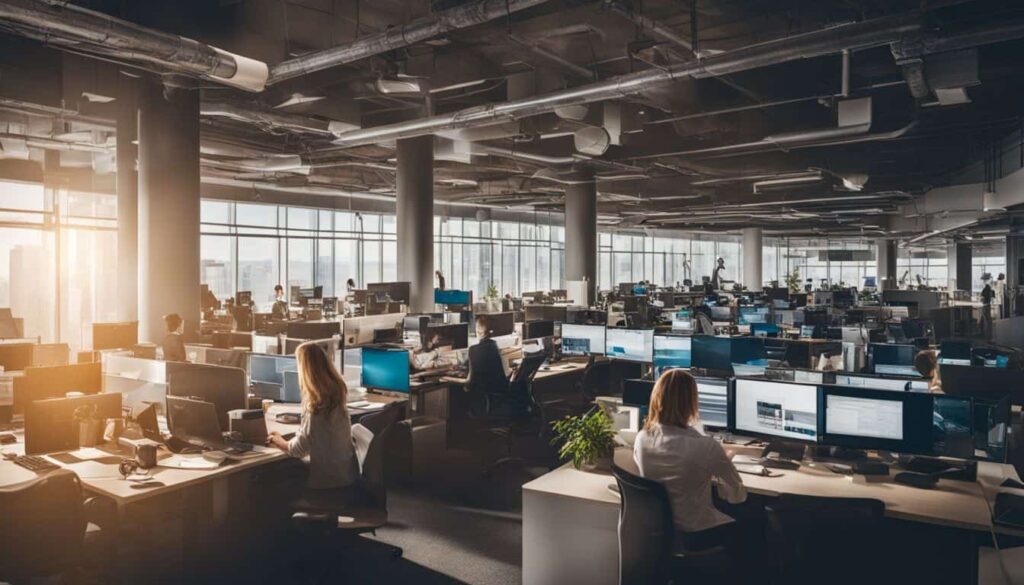
Video surveillance systems play a paramount role in revealing areas ripe for improvement.
- Workflow bottlenecks: Surveillance cameras help to identify slow operations and processes that impede efficiency.
- Employee inefficiencies: Observing employees via video can disclose inefficient work methods and behaviors that need correction.
- Customer service issues: Video footage allows review of customer-employee interactions, uncovering service quality problems that call for improvement.
- Safety violations: Cameras catch safety code breaches, assisting businesses in addressing them before they cause accidents.
- Inventory mismanagement: Surveillance helps spot flawed inventory practices that can lead to product loss or damage.
- Weak security areas: Video surveillance can highlight vulnerable security spots within the business’ premises, paving the way for enhanced protection measures.
- Ineffective layout designs: Monitoring how people move through your business space can expose ineffective layouts hindering smooth traffic flow.
- Maintenance needs: Regularly surveilled areas and equipment enable early detection of maintenance requirements, preventing potential downtime.
- Cost inefficiencies: Surveillance data associated with utility usage and operational aspects offers valuable insights into potentially wasteful practices, leading to more cost-effective solutions.
Enhancing customer service

High-quality video surveillance systems can offer crucial insights into customer behavior, thereby playing a pivotal role in enhancing customer service. With advanced features like real-time monitoring and facial recognition, businesses can track customer patterns and preferences.
This helps staff respond more effectively to consumer needs and creates a more personalized shopping experience for customers. A well-placed security camera also conveys to the customers that their safety is a priority, resulting in increased trust and loyalty towards the business.
The use of surveillance equipment can be instrumental in conflict resolution as well – providing clear evidence during misunderstandings or disputes about purchases or transactions.
Identifying potential hazards and addressing them

Video surveillance considerably aids in identifying potential hazards and implementing measures to address them. Here’s how:
- Surveillance cameras can spot risks like unattended objects, suspicious activity, or hazardous materials.
- Video analytics software pinpoints unusual behaviors that could pose a threat.
- PTZ cameras provide broad coverage and detailed close – ups to investigate potential concerns.
- Real – time alerts enable immediate action when threats are detected.
- Recorded footage assists in post – incident investigations for future prevention strategies.
- Integration with other systems, like alarms or access control, enhances overall security response.
- AI – powered video analytics facilitate effective suspicious activity detection.
- Thermal cameras help identify hidden dangers, especially in low – light areas.
- Weather – resistant cameras ensure reliable operation during adverse conditions.
- Emergency response plans can be swiftly activated based on surveillance input.
Preventing Loss and Theft

With video surveillance, businesses can effectively monitor their inventory and assets, quickly identifying instances of internal theft. These security systems deter external thefts and shoplifting incidences by providing a strong visual deterrent to potential thieves.
By strategically placing cameras in high-risk areas such as cash registers or expensive merchandise displays, business owners could significantly reduce losses from theft. Plus, the presence of cameras alone often discourages employees from unethical activities or behaviors that could negatively impact the company’s bottom line.
Monitoring inventory and assets
Video surveillance systems provide businesses with a robust tool for monitoring inventory and assets. With this technology, business owners can keep an eye on valuable goods in real time, reducing the chances of theft or misplacement.
HD video quality offers precise imagery helping in identifying any irregularities in inventory counts or signs of tampering.
Asset protection doesn’t stop at physical items; it also covers vital areas within the premises. Surveillance cameras work as silent security guards, keeping watch over cash registers, safes, and expensive machinery or equipment.
This comprehensive coverage promotes cost-effective operational efficiency by warding off potential losses due to thefts or damages.
Identifying and deterring internal theft
Video surveillance plays a crucial role in uncovering and preventing internal theft. From pilfered office supplies to significant cash theft, internal theft expenses businesses billions yearly, but surveillance systems can help stem this cost.
Employees are less likely to commit such acts when they know their actions could be recorded on camera. Furthermore, the video footage serves as solid evidence should any unlawful activities occur.
Digital video surveillance is the watchdog that never sleeps or looks away, protecting your business investment around the clock.
Reducing external theft and shoplifting
Video surveillance systems serve as a powerful deterrent to shoplifters, reducing external theft significantly. Oftentimes, the visible presence of security cameras alone can discourage potential thieves.
With video analytics and real-time alerts, businesses can instantly detect suspicious behaviors or activities in their premises. High-definition video quality provides clear images of culprits which aid law enforcement agencies in apprehending offenders faster and more effectively.
Wireless cameras enable flexible placement to monitor hard-to-reach areas such as blind spots where shoplifters often operate. Furthermore, features like facial recognition and license plate recognition enhance the capability to identify repeat offenders or organized retail crime groups, taking preventive measures before another incident occurs.
Enhancing Decision-Making and Planning

Video surveillance can be instrumental in facilitating data analysis and pattern recognition, fostering smart business decisions and strategic expansion planning. Discover more on our exploration of video camera integration with analytics tools for optimizations in decision-making processes!
Analyzing data and patterns
Video surveillance systems go beyond simply recording events, they offer a unique insight into the daily operations of businesses. Collecting data from video footage allows for pattern recognition and analytics that drive efficiency and productivity.
This analysis can reveal peak business hours, frequent visitor counts, traffic flow patterns and much more.
With access to this in-depth information, business managers can make informed decisions tailored to their operation’s needs. For example, staff schedules could be adjusted based on foot traffic data resulting in optimized staffing levels during high-traffic periods.
Similarly, analyzing customer behavior can lead to effective merchandising strategies designed for increased sales. Video surveillance facilitates real-time understanding as well as a panoramic view that aids in planning long-term strategies for growth and expansion.
Making informed business decisions
Video surveillance plays a crucial role in the decision-making process for businesses.
- It provides data on employee productivity, revealing areas of strength and places needing improvement.
- Surveillance systems offer insights into customer behavior which influence marketing strategies.
- Real – time video surveillance helps managers make immediate decisions in case of emergencies or suspicious activities.
- Reviewing footage can uncover inefficiencies in workflow, leading to better operational processes.
- Inventory tracking through video surveillance helps businesses avoid overstocking or understocking products.
- Analysis of recorded videos enables the identification of peak business hours, assisting in staff allocation and planning.
- Constant surveillance aids in preventive maintenance by spotting potential issues before they turn into major problems.
- Surveillance data assists in dispute resolution, helping businesses make fair decisions.
- Systems featuring vehicle license plate recognition can aid parking management decisions.
- AI – powered video analytics provide valuable insights for improving business operations and planning future growth.
Planning for future growth and expansion
Video surveillance systems play a vital role in planning for future growth and expansion. This is because:
- Video analytics gather insightful data, helping businesses make informed decisions about current operations and potential opportunities.
- Surveillance systems help track customer behavior patterns, contributing to crucial market research, product placement, and improved customer service.
- Advanced video surveillance can anticipate potential risks or threats, allowing for proactive security measures.
- Real-time video footage helps manage multiple business locations efficiently, fostering successful multi-location expansion.
- The scalability of video systems ensures they grow alongside the business without significant additional investments.
- Surveillance systems enable you to monitor inventory effectively, reducing losses and optimizing stock levels for growth.
- Integration with other systems such as access control or alarm notifications improves operational efficiency and paves the way for expanding services or departments.
Integrating with analytics and business intelligence tools
Business intelligence tools and analytics have a key role to play in modern video surveillance. These advanced software applications do more than store and manage footage. They can analyze trends, identify patterns, and provide actionable insights from large volumes of complex video data.
This functional integration allows businesses to understand their operations better.
With this powerful combination of video surveillance and business intelligence tools, you are equipped with real-time information that can significantly improve decision-making processes.
Using intelligent algorithms, these tools scrutinize recorded footage for anomalies or unusual patterns. This capability is crucial not only for security purposes but also for achieving operational efficiency by streamlining workflows based on the analysis results.
Remote Monitoring and Management

Video surveillance systems now allow business owners to monitor multiple locations from a central control room or even remotely from their phones. Real-time video feeds offer immediate insight into business operations, regardless of your location.
Advanced features also provide options for managing camera settings, granting you flexibility and control over your security footage. Integration capabilities with access control systems or alarm notifications give added assurance that your premises are safe and secure at all times.
Monitoring multiple locations from a central control room
Centralized control rooms make it possible for businesses to monitor multiple locations simultaneously. High-definition (HD) video feeds from various facilities are sent in real-time to a single location.
This approach reduces the need for on-site security personnel while enhancing the overall surveillance coverage and effectiveness. Centralized monitoring also makes emergency responses more efficient, as alert systems can be integrated directly into the setup.
Digital video surveillance ensures any suspicious activity across all business premises is promptly detected and addressed, greatly increasing safety and reducing the chances of theft or vandalism.
Accessing real-time video feeds remotely
Real-time video feeds are now accessible remotely, thanks to advancements in surveillance technology. This feature allows business owners and managers to monitor their establishments virtually anytime, anywhere.
Using a mobile app on your smartphone or tablet, you can view live footage from your security cameras. This is particularly useful for businesses with multiple locations as it negates the need for physical presence at all sites.
It grants peace of mind knowing you have immediate access to real-time activities within your premises even when miles away. Moreover, remote accessibility also aids in swift responses during emergencies or suspicious events by enabling immediate viewing of the situation as it unfolds.
Managing and controlling cameras and settings remotely
Remote management and control of cameras and settings form a crucial part of an effective video surveillance system. With this feature, businesses can enjoy the following benefits:
- Around-the-clock accessibility: Users can access camera feeds at any time, from anywhere.
- Flexibility in operations: Adjusting camera angles or changing settings can occur without physically touching the equipment.
- Swift response to incidents: Real-time video surveillance allows immediate reaction to security breaches or unusual activity.
- Efficient use of resources: Remote monitoring reduces the need for on-site security personnel.
- Enhanced decision-making: Immediate access to live footage aids in accurate and timely decision-making during emergencies.
- Seamless integration with other systems: Cameras can integrate easily with alarm systems and notifications for comprehensive security coverage.
- Scalability for growing businesses: As a company expands its operations or opens new locations, adding additional remote cameras becomes simple and quick.
Integrating with access control systems
Video surveillance systems can seamlessly merge with access control mechanisms for a unified security solution. This powerful combination enhances the protection of your business premises by ensuring that only authorized personnel gain entrance.
The access control system manages building entry points, while video surveillance continuously records activities within those areas. This integration allows you to correlate physical access data with visual evidence, easing the identification process in case of incidents like theft or vandalism.
Moreover, it’s convenient to have both functions controlled from one central location or software platform. It not only simplifies operation but also allows faster response times during emergencies as all crucial information is available at once.
Integrating with alarm and notification systems
Video surveillance systems can seamlessly merge with alarm and notification mechanisms. This makes the security process more efficient, providing timely alerts when unusual activities are detected.
The integration leads to prompt emergency responses by triggering sirens or sending notifications directly to law enforcement officials. Through this amalgamation, business owners gain maximum control over their security measures.
They can ensure a quick response from relevant personnel in case of a security breach while also being able to monitor daily workflow effortlessly. Most importantly, system integration leads to swift action during crises, limiting damage and loss caused by break-ins or vandalism.
Legal Compliance and Privacy Considerations

Incorporating video surveillance calls for a comprehensive understanding of privacy laws and regulations. Implementing privacy policies and procedures ensures legal compliance that protects employees’ and customers’ rights.
Businesses must educate everyone involved about the scope of video surveillance while respecting personal boundaries, thereby fostering trust and confidence in the system’s use.
Implementing privacy policies and procedures
Businesses deploy video surveillance not only to ensure safety and security but also while respecting privacy rights. The initiation of privacy policies is crucial in achieving this balance.
Such guidelines define how, when, and where the cameras are deployed, who has access to feeds or records, and how long data is stored. It’s essential to clearly communicate these policies with both employees and customers for transparency.
Strict adherence to these procedures helps maintain trust among stakeholders while leveraging the benefits of surveillance systems. Laws vary by location; thus businesses should consult a legal advisor during policy development for compliance assurance.
Ensuring compliance with local laws and regulations
Compliance with local laws and regulations plays a significant role in operating video surveillance systems responsibly and effectively. Here are some key steps to ensure your business abides by these legal requirements:
- Familiarize yourself with all relevant federal, state, and local laws related to video surveillance.
- Pay extra attention to laws regarding audio recording as these might differ from those for video surveillance.
- Consult an attorney or legal expert if you have questions about compliance.
- Train employees on the legal aspects of video surveillance and privacy rights.
- Keep up-to-date with changes in the law that may affect your camera placements or policies.
- Review your own company’s privacy policies regularly to ensure they reflect current best practices.
- Make sure there is clear signage indicating the presence of surveillance cameras where required by law.
- Regularly audit your video surveillance system to check its adherence to laws and standards.
- Ensure data retention policies match legal requirements for storing recorded footage.
- Follow guidelines for sharing recorded footage with third parties, including law enforcement agencies.
- Incorporate cybersecurity measures into your surveillance systems to prevent unauthorized access or data breaches, which can lead to legal issues.
Educating employees and customers about video surveillance
Educating employees about video surveillance starts with outlining its importance for the safety and security of the business. Employees should be made aware of how this technology assists in preventing theft, fraud, and other illicit activities.
Detailed training sessions can demonstrate how surveillance systems work, what they monitor, and when they operate.
Customers also need to understand why a business uses video surveillance. Clear signage indicating that the premises are monitored is an effective way to deter potential thieves while assuring customers that their safety is a priority.
Businesses can further enhance transparency by providing brochures or pamphlets on request explaining the use of video surveillance systems.
Cost Benefits of Video Surveillance

Implementing a robust video surveillance system can lead to significant economic advantages for your business, such as decreased theft and losses, reduced insurance premiums through risk management, and increased operational efficiency.
Read on to discover how this investment could provide substantial savings for your company in the long run!
Reduction in theft and losses
Implementing video surveillance systems provides measurable benefits in decreasing theft and losses. Surveillance cameras act as a powerful deterrent to both internal and external theft.
When potential thieves see that an area is under constant watch, they are less likely to commit crimes.
Notably, businesses have reported significant reductions in loss of inventory due to shoplifting incidents after installing security camera systems. Real-time monitoring allows for immediate reaction, preventing thefts from happening or catching criminals red-handed.
Even in cases where thieves do steal, high-quality footage can furnish crucial evidence leading to recovery of stolen items and holding the culprits accountable.
Risk management and insurance premiums
Video surveillance plays a crucial role in risk management and can significantly impact insurance premiums for businesses. Here’s how:
- Surveillance systems provide a first layer of protection against potential security risks, such as break-ins or theft.
- They serve as a proactive measure to minimize the severity of these incidents if they occur.
- Video evidence from surveillance cameras can also streamline the process of filing insurance claims after an incident.
- Insurance companies may offer lower premiums to businesses that have comprehensive video surveillance systems installed.
- The systems help deter fraudulent claims, which can be costly to both businesses and insurance companies.
- Regular use of surveillance footage for risk assessment further strengthens business operations and reduces potential losses.
- Implementation of advanced features like motion detection or facial recognition can enhance a business’s risk management capabilities.
- Integrating video surveillance with alarm systems provides additional security layers, further reducing potential risks.
Operational efficiency and process improvement
Video surveillance plays a critical role in enhancing operational efficiency and process improvement. Here’s how:
- Surveillance cameras keep an eye on the workflow, ensuring smooth operations.
- Video feeds help identify any breakdown or disruption in processes.
- Managers can optimize productivity by reviewing footage to find areas for improvement.
- Real – time monitoring allows quick issue resolution, avoiding further losses or downtime.
- Businesses can streamline customer service based on insights from customer behavior analysis captured via video footage.
- Potential hazards disrupting operations get detected earlier with constant surveillance.
- Efficient use of digital video surveillance reduces loss and preventable accidents.
- Businesses gain better control over their assets and inventory management through perpetual monitoring.
- Surveillance systems provide valuable data used for making informed decisions to improve business processes.
- It promotes transparency, encouraging employees to perform at their best and stick to the prescribed guidelines.
Best Practices for Implementing Video Surveillance
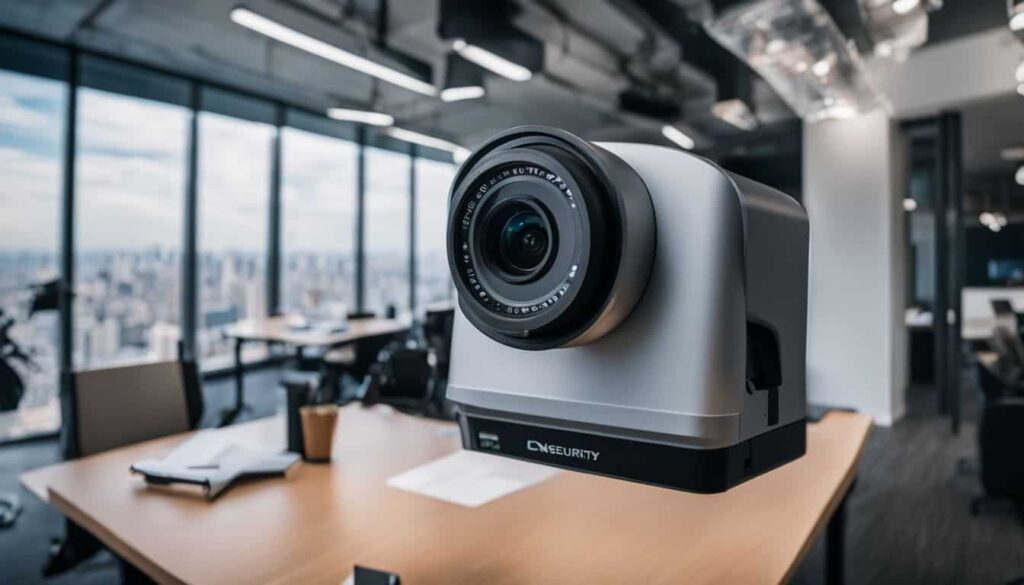
To ensure the maximum effectiveness of your video surveillance system, it’s crucial to follow best practices. Start with conducting a comprehensive risk assessment to identify vulnerable areas and high-risk zones within your business premises.
Next, careful planning is needed when deciding on camera placement – strategic positioning can maximize coverage and optimize views. Regular maintenance checks and updates are essential to keep your surveillance system running smoothly and efficiently.
Additionally, privacy policies must be established and communicated effectively to employees in order to maintain transparency and compliance with legal regulations.
Conducting a risk assessment
Conducting a risk assessment is a critical step in implementing a video surveillance system.
- Identify potential threats and vulnerabilities: This includes both internal and external risks, such as theft, vandalism, or unauthorized access.
- Assess the value of assets: Evaluate what you’re protecting – whether it’s merchandise, equipment, or sensitive data.
- Review current security measures: Check if existing systems are effective and identify areas where security can be bolstered.
- Determine the impact of potential loss: Understand how much damage could occur from different incidents.
- Develop a plan to address risks: Use this assessment to guide the installation and management of your video surveillance system.
- Do frequent reassessments: Regular updates can help detect new threats and ensure your system stays effective over time.
Strategically planning camera placement
Optimal placement of security cameras maximizes your video surveillance system’s effectiveness.
- Identify high-risk areas: Look for spots most likely to be targeted by criminals or prone to accidents.
- Prioritize entrances and exits: Make sure all entry and exit points are under surveillance, both inside and outside of the building.
- Cover off-street windows: Windows not directly viewable from the street can be tempting access points for burglars.
- Survey main hallways and corridors: Monitoring these areas ensures coverage of internal movement within the business premises.
- Position cameras with a wide field of view: Wide-angle lenses allow for broader coverage, reducing blind spots.
- Protect valuable assets: Place cameras so they monitor areas where valuable assets or sensitive information are stored.
- Install cameras at sufficient heights: Cameras placed too low might get vandalized or tampered with, while those placed too high might not capture clear enough details.
- Account for lighting conditions: Consider possible glare during different parts of the day and choose suitable camera locations accordingly.
Regular maintenance and updates
Keeping your video surveillance system at peak performance requires regular maintenance and updates. This can include procedures such as:
- Frequent cleaning of camera lenses for clear and reliable footage.
- Checking the system’s power supply to prevent unforeseen shutdowns.
- Verifying that all cameras are working correctly, replacing faulty equipment promptly.
- Updating software regularly to benefit from new features, improvements, or security patches.
- Reviewing and adjusting camera angles for optimal coverage of critical areas.
- Assessing the storage capability frequently to ensure sufficient space is available for storing footage.
- Ensuring secure remote access is updated to prevent unauthorized access.
- Running routine checks on backup power supplies to prevent system failure during power outages.
- Analyzing the quality of recorded images, particularly in varying lighting conditions, ensuring that they meet necessary standards.
- Regularly consult with a professional service provider for a comprehensive system check.
Employee education and privacy policies
Employee education about video surveillance systems is a necessary endeavor. The workers need to understand why such a system is in place, how it benefits them and the business, and what their rights are concerning its use.
This knowledge fosters trust between employees and employers while establishing an environment of transparency. Privacy policies also play a critical part in the responsible use of video surveillance at the workplace.
They ensure that surveillance remains legal and ethical, protecting both customer and employee privacy rights from potential abuses. Businesses must create clear, compliant privacy guidelines outlining areas under surveillance and those exempt for private activities as per local laws and regulations.
Both these factors complement one another in fostering respect for individual rights while keeping the premises secure.
Conclusion
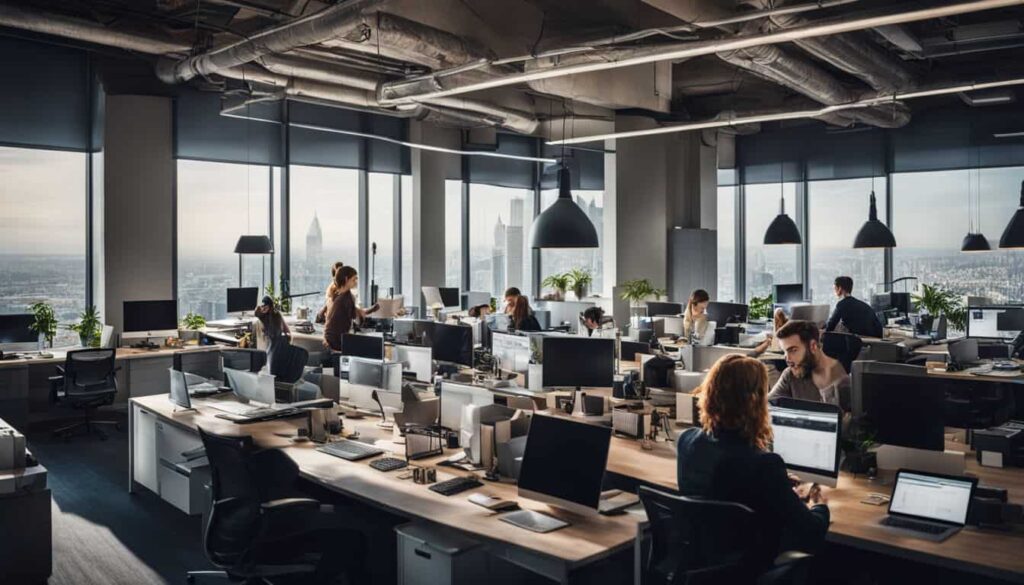
Embracing video surveillance propels businesses towards safer, more efficient operations. This powerful tool not only enhances security but also streamlines processes and aids in strategic decision-making.
Ultimately, a well-implemented video surveillance system sets the stage for robust growth and prosperity in any business landscape.
FAQs
Why does my business need video surveillance?
Your business needs video surveillance for multiple reasons, such as improving security, preventing theft or vandalism, and ensuring regulatory compliance. It can also enhance customer service and employee safety.
How do security cameras work in a retail business?
In a retail business, security cameras like CCTV or IP cameras help to monitor activity, prevent loss through theft, ensure good security practices, and aid law enforcement if necessary.
Can video surveillance be used for more than just protection?
Yes! Although it’s great for perimeter security and intrusion detection; its features like audio recording capabilities, and data analytics from cloud-based video surveillance software can assist businesses with better customer interactions and operation insights.
Are there any concerns about privacy with the use of video surveillance in businesses?
While installing a leadership system is important to maintain high levels of safety at the workplace; adherence to ethical guidelines along proper understanding of local surveillance and privacy laws must be taken into account to ensure fair handling of recorded footage.
What factors should I consider when setting up a camera placement strategy?
When planning your camera placement strategy, you have to consider indoor vs. outdoor camera types depending on the location’s needs where PTZ cameras may benefit in some situations; bandwidth considerations come into play regarding storage plus quality of the footage being captured etcetera.
Is there mobile app access available for managing the Video Surveillance System?
Yes! Many modern-day solutions offer Mobile App interfaces that let you monitor live videos from anywhere reducing crime rates significantly via rapid incident response times based on triggered activity alerts.
